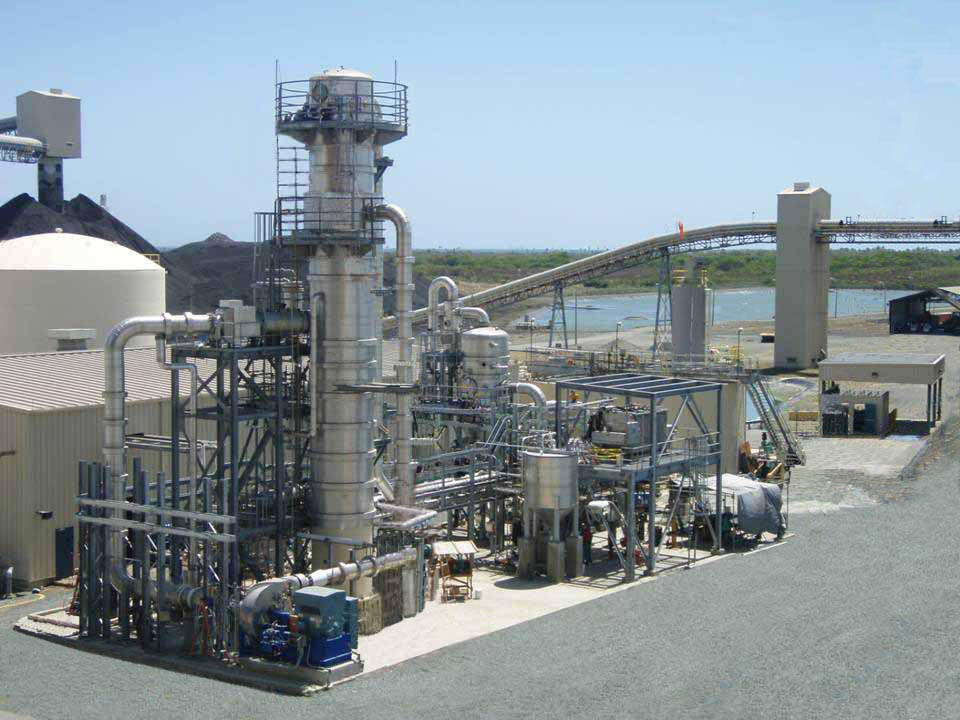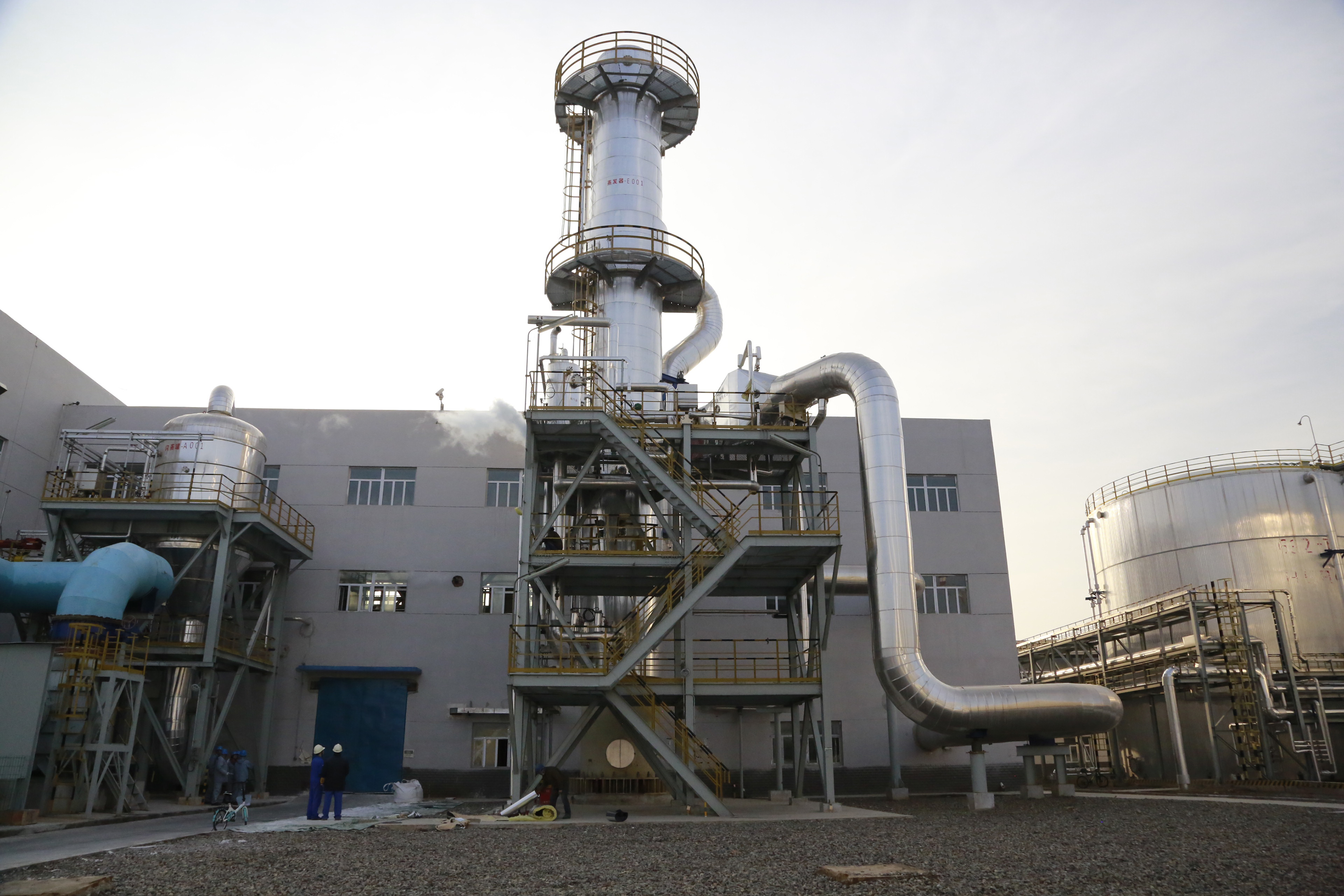Egypt’s First Integrated Zero Liquid Discharge Plant
Save as PDF
Zero-liquid discharge (ZLD) is a water treatment process in which all wastewater is purified and recycled; therefore, leaving zero discharge at the end of the treatment cycle. Zero liquid discharge is an advanced wastewater treatment method that includes ultrafiltration, reverse osmosis, evaporation/crystallization, and fractional electrodeionization.
Aquatech has an unparalleled depth of experience in zero liquid discharge (ZLD), which include more than 160 installations, including stand-alone thermal/evaporative processes, membrane processes, or hybrid systems.
The power industry as well as oil & gas, chemical, petrochemicals, mining and other industries generate large volumes of waste water that must be managed. Commonly these wastewaters are discharged via a plant outfall to a surface water body, an evaporation pond, or in some cases deep well injected. However, there are growing environmental concerns regarding such discharge practices, which has resulted in the development of Zero Liquid Discharge (ZLD) processes.
Zero liquid discharge can be defined broadly as a process for maximum recovery of water from a waste water source that would otherwise be discharged. This water is beneficially reused and the salts, and other solids contained in the waste water are produced and generally disposed in a landfill.

The drivers for zero liquid discharge include a growing concern by the public about the impact of such discharges on the environment, and in many areas of the world, water is a scarce resource. Such concern is resulting in increased regulation and limitation of waste water discharges. Even without regulatory push, many companies in various industries are mandating initiatives for reducing water discharge by recycle reuse, as well as ZLD, to reduce their environmental footprint and improve sustainability.
Zero liquid discharge can be achieved in various ways. There is no “one size fits all” solution, as the optimal system design is site specific. The waste water composition, various streams to be treated, site specific operating costs, foot print availability and other factors are determining factors for an optimal design.
The system objectives for a zero liquid discharge system are to eliminate a liquid waste water discharge, generate solids for landfill disposal or reuse, and to recycle a high-quality water that can be beneficially reused. The design objectives are to minimize the capital investment and system operating cost, while not significantly impacting the manpower required for operation. Further, the system must be designed with operational flexibility to meet the facility needs and be safe and reliable.
Careful consideration of waste water chemistry is needed for the successful design and operation of a zero liquid discharge system. A sound water chemistry design basis is key to successful zero liquid discharge design.
The chemical constituents of concern for a zero liquid discharge system typically are as follows:
| Sodium | Chloride |
| Potassium | Fluoride |
| Calcium | Sulfate |
| Magnesium | Nitrate |
| Barium | Phosphate |
| Strontium | Ammonia |
| Silica | Boron |
| TDS/TSS | Alkalinity |
| COD/TOC/BOD | Oil & Grease |
| pH |
Table 1 Typical Chemical Constituents of Concern
In a zero liquid discharge system, the waste water being processed is concentrated to solubility limits of the dissolved salts. When the solubility limits are exceeded, salts crystallize and can then be harvested using an appropriate means.
Evaporation systems generally are more capital and operating cost intensive than membrane systems, with crystallizers the most costly. For that reason, and when possible, membrane systems can be utilized to reduce the capital and operating cost of the evaporation system.
Depending on the waste water composition, preconcentrating using a membrane system can dramatically reduce the sizing requirement of the backend evaporations system and thus the system capital and operating cost. Note that to reach high recoveries in a waste water membrane system, appropriate pretreatment such as softening and pH adjustment is often required.

Vertical tube falling film brine concentrators are generally used to concentrate lower total dissolved solids (TDS) brine solutions up to 12% to as high as 25% total solids and are used to minimize the design capacity of a downstream forced circulation crystallizer. Brine concentrators are specifically designed to manage the scaling of sparingly soluble divalent salts such as calcium sulfate and calcium carbonate, as well as silica that is also commonly present. Forced circulation crystallizers are generally used to concentrate brine blowdown from upstream concentration equipment, although small waste water flows are sometimes treated directly with a forced circulation crystallizer. Crystallizers are designed to manage crystallization of all salts, sparingly soluble as well as highly soluble sodium salts such as sodium chloride and sodium sulfate, without excessive scaling and cleaning frequencies. This robustness comes at the expense of higher specific energy consumption and higher specific capital cost.
The solids generated by a forced circulation crystallizer are generally harvested and dewatered by either an indexing belt filter or by centrifuge. In such case the solids are collected and typically landfilled in a conventional landfill as long as the waste passes Toxicity Characteristic Leaching Procedure (TCLP) testing. However, in some applications involving, zero liquid discharge equipment the highly concentrated brine is discharged to an evaporation pond. Such a configuration reduces the footprint of the evaporation pond, and the labor and expense of operating the dewatering equipment.
Save as PDF
Save as PDF
Save as PDF